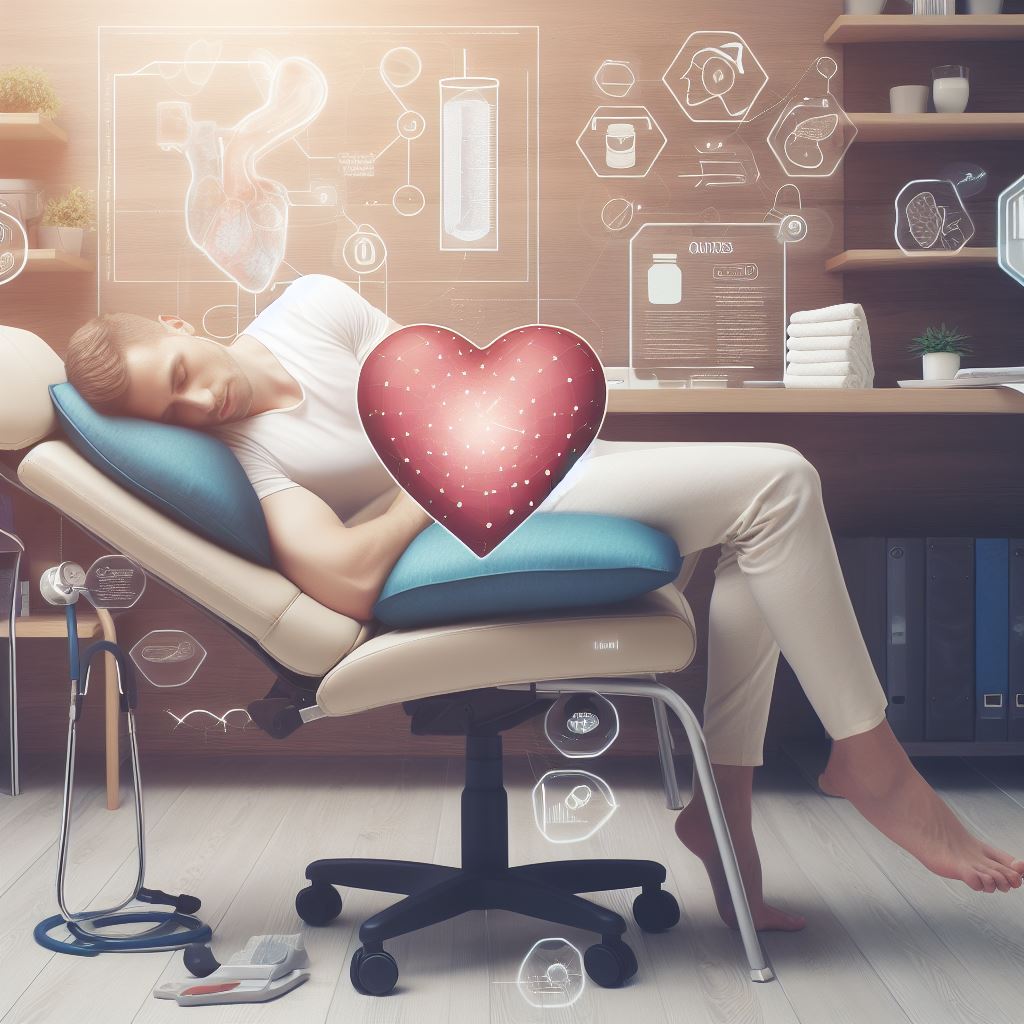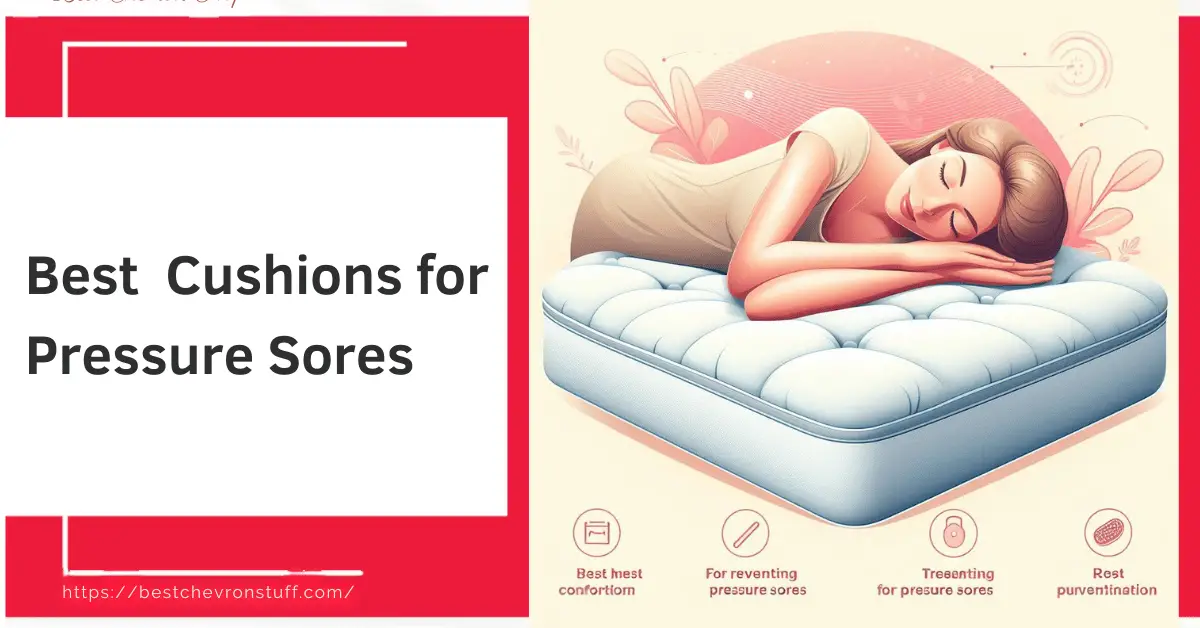Pressure sores, also known as bedsores or pressure ulcers, are injuries to the skin and underlying tissue caused by prolonged pressure on the skin. They commonly affect people who are bedridden or use a wheelchair. Pressure sores can range from mild redness to severe open wounds, and can lead to serious complications if not properly treated. Using a specialized cushion is one of the main ways to prevent and treat pressure sores. This article discusses the best cushions for preventing and healing pressure sores.
What Causes Pressure Sores?
Pressure sores form when pressure on an area of skin reduces blood supply to the tissue. Without adequate blood flow, the skin and tissue become deprived of oxygen and nutrients. This causes them to break down and die. Pressure sores most often develop on skin over bony areas where pressure is highest, such as the tailbone, hips, heels, ankles, shoulders and back of the head.
People at highest risk include:
- Those who are bedridden or use a wheelchair
- People with limited mobility due to conditions like spinal cord injuries, muscular dystrophy, multiple sclerosis or Cerebral Palsy
- Older adults with reduced mobility
- People with impaired sensation due to neurological conditions or medication use
- Those with poor nutrition or hydration
Stages of Pressure Sores
Pressure sores are categorized into four stages depending on severity:
Stage 1
- Skin is not broken but appears reddened or discolored
- The area may feel firmer or softer than surrounding skin
- The sore may itch, burn or hurt
Stage 2
- Some loss of skin layers causes an open wound or blister
- The sore appears as a shallow, pinkish red ulcer
- There may be fluid-filled blisters
Stage 3
- Skin loss extends into the fat layer beneath the skin
- The sore becomes a deeper crater-like wound
- Muscle, tendon and bone are not exposed
- Dead tissue and fluid buildup may be present
Stage 4
- The pressure sore has become so deep it exposes muscle, tendon and/or bone
- There is extensive damage and tissue death (necrosis)
- Large amounts of dead tissue, fluid or drainage are present
- Infection of the bone (osteomyelitis) may develop
Early treatment is key to healing pressure sores and preventing them from worsening. Using a specialized cushion is one of the main interventions to relieve pressure.
How Do Cushions Prevent and Heal Pressure Sores?

Cushions designed for pressure sore prevention help in two key ways:
1. Redistributing pressure: They redistribute body weight across a larger surface area so there is less direct pressure over bony prominences. This allows blood flow to continue to these areas.
2. Reducing shear forces: Many cushions are designed to reduce shear forces. Shear occurs when the skin sticks to a support surface while the bony structure underneath shifts. This tugging and rubbing can damage skin and impede blood flow.
For treating existing pressure sores, cushions provide pressure relief around the wound site to promote healing. They also help prevent new sores from forming.
Key features that make cushions effective for managing pressure sores include:
- Moldability to match body contours
- Immersion to “float” bony areas
- Enhanced ventilation and airflow
- Moisture control
- Easy cleaning and maintenance
Types of Cushions for Pressure Sores
There are several main types of cushions designed to prevent and treat pressure sores:
1. Foam Cushions
Foam cushions redistribute pressure by conforming to the body’s shape. Standard foam compresses fully under body weight. More advanced foams have “memory” to gently rebound after compressing to better float bony areas.
Pros
- Inexpensive
- Widely available
- Easy to clean
Cons
- Can trap heat
- Prone to flattening with use
- Limited pressure redistribution
Examples: Egg crate foam, gel foam, memory foam
2. Air Cushions
Air cushions contain interconnected air cells that provide full immersion and envelopment. The air system dynamically adjusts as the person moves or is repositioned.
Pros
- Excellent pressure redistribution
- Full immersion and envelopment
- Pressure adjusts dynamically
- Cooler than foam
Cons
- At risk of deflation
- Require inflation
- Less stable for transfers
Examples: Roho, Repose
3. Gel Cushions
Gel cushions use viscoelastic gel that softens and deforms under pressure while remaining supportive. The gel molds to the body but retains shape when unweighted.
Pros
- Effective pressure redistribution
- Retains shape when unweighted
- Cooler than foam
- Durable
Cons
- Can feel firm initially
- Heavy
- Cost more than foam
Examples: Technogel, Conforgel
4. Honeycomb Cushions
Honeycomb cushions contain interconnected air cells in a hexagonal pattern. The cell walls collapse under pressure to redistribute weight.
Pros
- Lightweight
- Breathable
- Low maintenance
- Retain shape when unweighted
Cons
- Less conforming than air or gel
- Can feel firm initially
Examples: ROHO Honeycomb, Varilite
5. Fluid / viscous cushions
These cushions have a viscous silicone or oil fluid that flows when weighted, enveloping bony prominences. Upon unweighting, the fluid returns to its original position.
Pros
- Highly conforming
- No pressure points
- Self-shaping
Cons
- Can be heavy
- Prone to leaking
- May require occasional refilling
Examples: Flo-tech Contour Cushion
How to Choose the Best Cushion for Pressure Sores
Consider the following when selecting a cushion for preventing or treating pressure sores:
- Weight capacity: Check it meets the person’s weight needs.
- Cushion material and feel: Assess comfort and whether it provides needed immersion.
- Pressure mapping: Have a seating clinic perform pressure mapping to identify how well the cushion redistributes pressure.
- Skin integrity: Ensure the cushion doesn’t negatively impact skin, especially around existing wounds.
- Climate control: Assess heat dissipation and moisture control properties.
- Ease of use: Check that the person can apply and remove the cushion independently if able.
- Compatibility with wheelchair/seating: Verify it fits the seating system properly.
- Maintenance: Select a cushion that is easy to clean and maintain.
- Cost and warranties: Consider cost along with expected longevity and warranty terms.
Input from a seating specialist, physical therapist or occupational therapist can help guide cushion selection. Ongoing evaluation is important to ensure the cushion is meeting the person’s pressure redistribution needs.
Best Cushions for Pressure Sores
Here are some top-rated cushions to consider for pressure sore prevention and healing:
Pressure Redistribution Foam Cushions
| Cushion | Details |
|---|---|
| Drive Pressure Relief Seat Cushion | Multi-layer foam with waterfall front edge. Lightweight and portable. |
| Supreme Gel Seat Cushion | Gel and foam hybrid offers cool, pressure-relieving support. |
| Cushionlabs Gel Memory Foam Seat Cushion | Gel infused memory foam. Odor resistant and antimicrobial. |
Air / Pneumatic Cushions
| Cushion | Details |
|---|---|
| ROHO High Profile Single Compartment Cushion | Adjustable air cells enhance immersion and skin protection |
| Permobil Air Cushion | Dual compartment air system with positioning support |
| Drive Air Cushion | Affordable interconnected air cell design |
Gel Cushions
| Cushion | Details |
|---|---|
| Purple Ultimate Seat Cushion | Gel grid design flexes and reforms to redistribute pressure |
| Drive Gel Infused Seat Cushion | Gel bladder surrounded by multi-layer foam |
| Aylio Coccyx Orthopedic Seat Cushion | Gel and memory foam relieve tailbone pressure |
Honeycomb Cushions
| Cushion | Details |
|---|---|
| Varilite Honeycomb Fracture Cushion | Dual-layer honeycomb design optimal for wounds |
| ROM Silicone Honeycomb Cushion | Silicone-coated honeycomb cells |
| Drive Honeycomb Foam Cushion | Molded honeycomb foam offers airflow |
Cushion Covers and Accessories
Cushion covers and accessories can enhance comfort, positioning, and pressure redistribution:
- Moisture-wicking covers: Help keep skin dry and prevent breakdown.
- Positioning wedges and blocks: Offload pressure from problem areas.
- Cushion inserts: Add immersion, stability, or cooling.
- Skin protection: Use dressings over wounds or at risk sites.
- Pressure mapping: Identifies high pressure areas needing accommodation.
Cushion Maintenance and Cleaning
To prolong cushion life and effectiveness:
- Check cushion for damage, leaks or improper inflation regularly
- Follow manufacturer’s instructions for cleaning method and products
- Allow foam and gel cushions to fully air dry after cleaning
- Disinfect air cell cushions periodically
- Replace cushions showing signs of wear, deterioration or inadequate pressure redistribution
With proper cushion selection, positioning, and skin care, pressure sores can often be prevented. For existing wounds, cushions are a key component of pressure sore treatment plans. Consulting healthcare professionals helps ensure optimal cushion choice and use.

